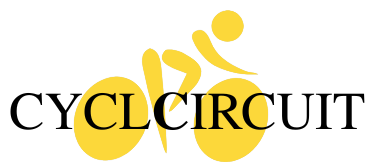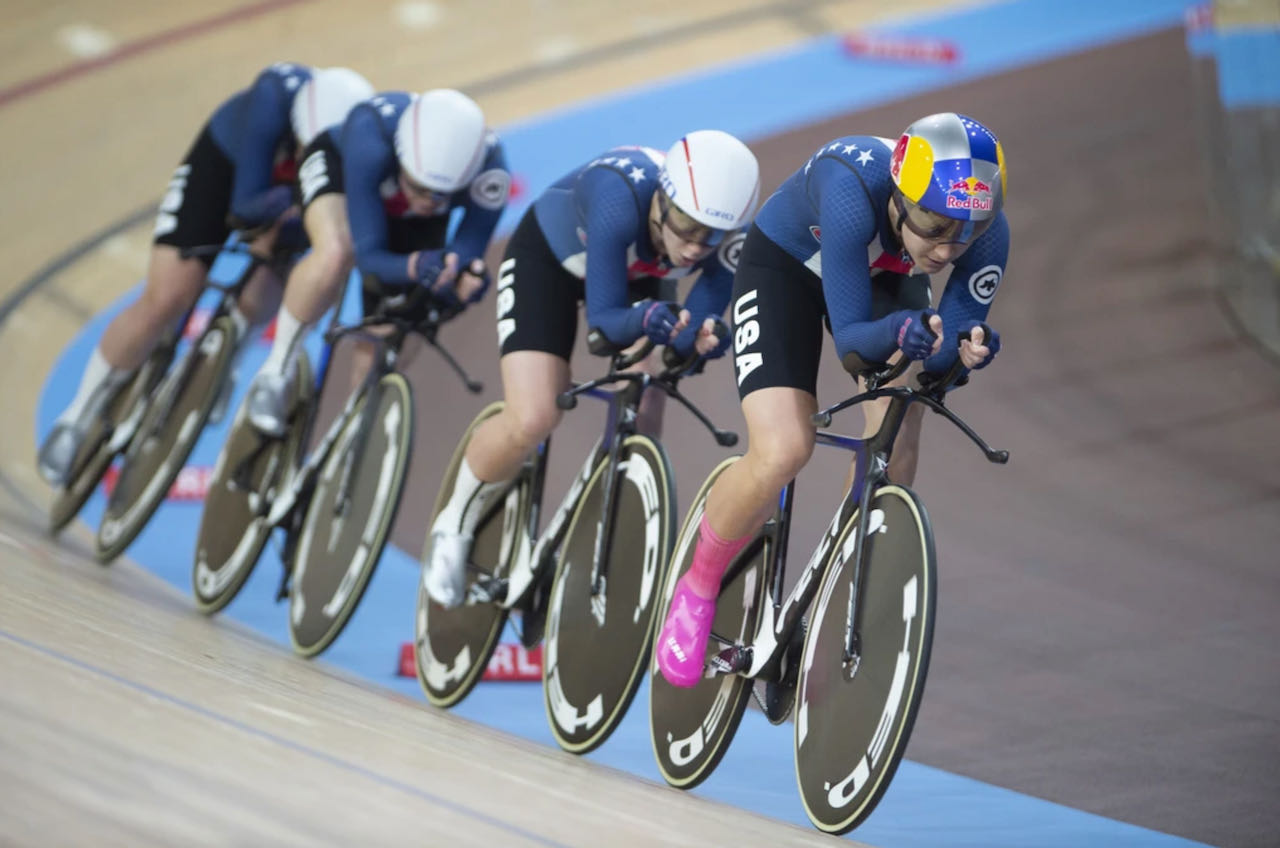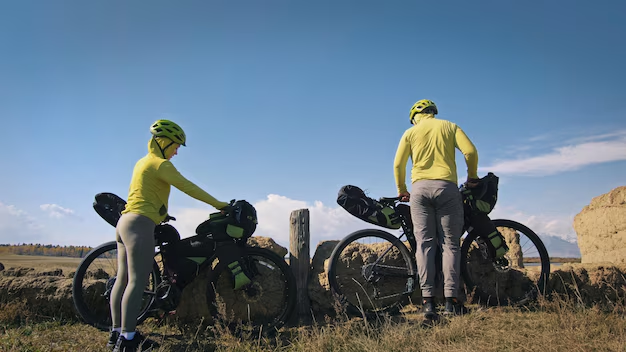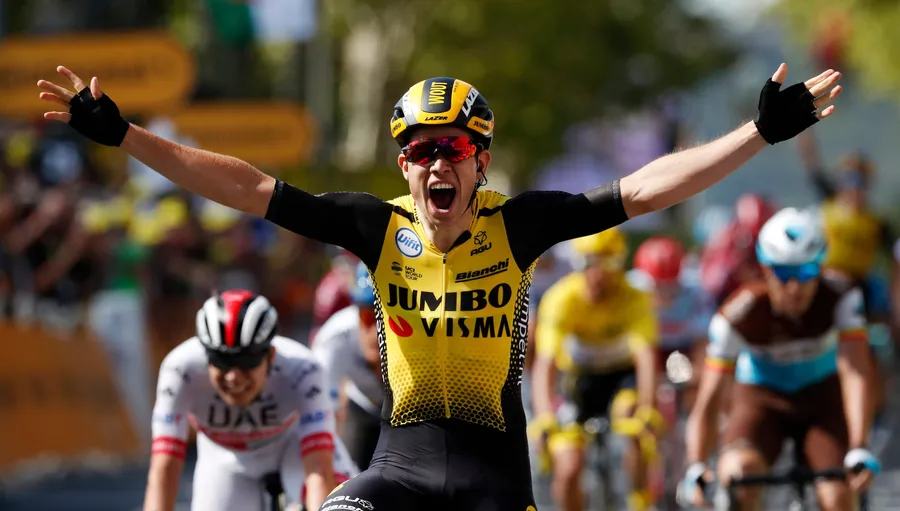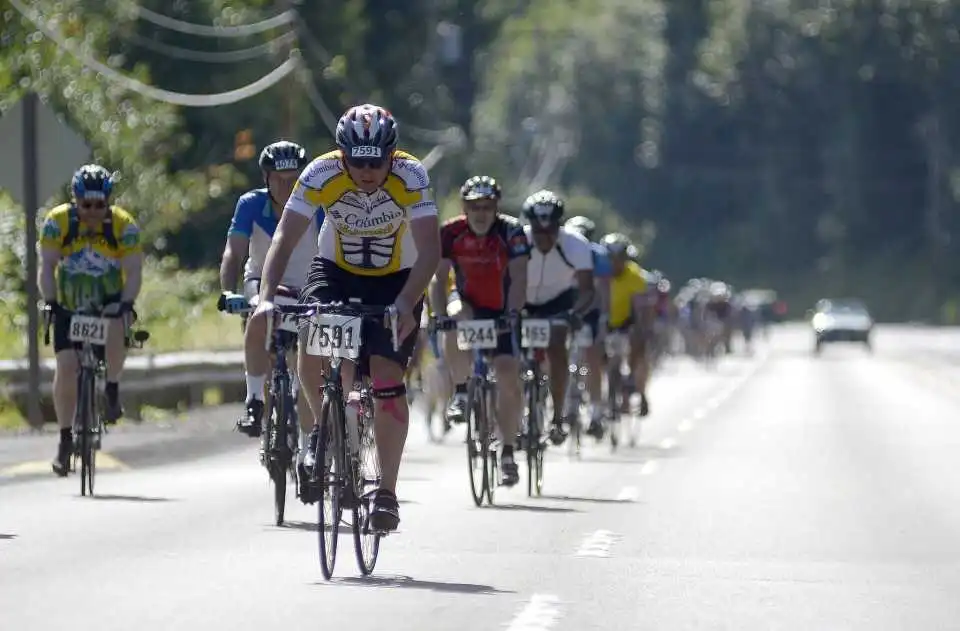Toolbox: It’s not how many times you get knocked down – it’s how many times you get up. Sports teaches many valuable lessons, and one of the most valuable is how to handle adversity. What are some keys to coming back from a setback due to injury or extended time away from the bike?

A Rollercoaster Year
2019 has been an absolute rollercoaster of a year for me personally, and professionally. On the plus side, The HVTraining Youtube channel hit over 600,000 views, I appeared on GCN to help Hank fix his atrocious pushups, I finally finished nearly 2 years of work to finalize my Strength Training for Cyclists Certification course which was well-received (it opens for enrollment January 2020- you can sign up down at the bottom of this article), and I’m nearly done writing my first book.
But while all of these big positives came about, my riding time plummeted off a cliff.
My total ride time for 2019 was 70 hours. Yup. TOTAL. That’s the lowest total I’ve had since I first started riding a bike to commute to and from my job as a lifeguard back in 2003. This wasn’t just due to the above projects demanding extra time, but due to several injuries.
So how have I kept myself in decent shape?
It has been incredibly difficult, and in all honesty, I’ve let my riding fitness drop (purposefully) the last 9 months, as it gave my an excuse to put my focus and effort into other areas of my life, mainly working on pieces and projects which will have a much farther reaching positive impact on our community of cyclists around the world.
These choices are not unique to me, and in fact, are decisions we EACH face every week, as our lives progress and our focuses and situations change. Let’s take a look at the major pillars of maintaining fitness & health, and how YOU can make the choices that are right for you.

Keep your Strength
Strength Training varies in its forms, from heavy barbells and dumbells, to kettlebells, TRX bands, and bodyweight exercises. When we are injured it’s important to do whatever it is we can, even if only in small doses, to maintain our basic strength.
This is going to take a number of different forms, which change as you go through the recovery process. For example during my broken leg, I started off with basic hip exercises I could do while lying down in comfortable positions that wouldn’t aggravate the injury, and pushing myself with my own bodyweight to the point where I was stimulating the metabolic systems (burning), which is 1 of the 3 mechanisms for muscular growth.
Over time I progressed to light to moderate seated kettlebell exercises such as shoulder presses, as well as banded exercises such as seated band rows.
The result of maintaining your strength with an eye on the bigger picture, is that your strength will decrease much less, allowing you to return to NORMAL movements much faster.
It may not seem like much, but when returning from injury one of the major components is that of getting you into healthy biomechanical patterns, and limiting any kind of limping or changes in how you execute a movement. This is based off of the tenet that in order for a muscle to optimally do its job, the joints must be aligned in ways that allow the muscles to do their jobs as intended (posture, position).
These strength workouts at the beginning may only be 1 set of 10-15 repetitions of one or two exercises done sporadically throughout the day, or even just 1x a day. It’s not the intensity with which you do them, but rather the consistency that matters.
Small amounts, done within your energy and movement abilities, with appropriate rest and nutrition, will heed great results in the long run.

Maintain your Body Composition
Perhaps the hardest part for endurance athletes as a whole, while injured, especially for a lower body injury where we hold lots of muscle mass, maintaining body composition can be incredibly tough.
The biggest mistake any athlete makes here, is focusing simply on weight. That number on the scale.
This is a huge mistake as the number on the scale tells you nothing more than the total mass of your body. Sticking with myself as an example, with my broken leg I managed to lose 6 kg (roughly 15 pounds). Many endurance athletes would see this as a win – Great! I’m lighter than I was before! I can come back at a higher watts per kilo and crush it!.
But that is far from the truth, as much of the weight lost was lean muscle mass.
This is why body composition maintenance is so important- We want to keep as much of our lean muscle mass as possible, while keeping a healthy body fat percentage (Men 8-12%, women 18-23%).
We maintain our body composition through 3 main factors:
Keeping our strength via appropriate strength training (within limits of your injury)
Eating a higher protein and higher nutrient density (fresh produce) diet.
Sleeping as our body dictates it needs for tissue repair
With these 3 key items, you can carefully construct a daily routine which allows you get your body everything it needs, and to continue to give just enough stimulus to maintain strength other places in the body, while allowing the body the rest and energy intake it needs to repair.

Keep your Aerobic Fitness
This is where I personally (purposefully) fell off in 2019. While I had 2 injuries which really did keep me off the bike due to risk of doing long-term damage to the tissues, in fact there was an option which I could have easily exercised (pun intended): the arm bike, also known as the UBE- Upper Body Ergometer.
While it would have taken a bit of effort to sign up for the gym that had the UBE and was
relatively crutch-friendly/ handicap accessible, this piece of equipment is incredibly useful for when you have a limiting lower-body injury that keeps you off the bike, or for which turning the pedals would slow down or alter the healing process.
I’m actually a big fan of the UBE for endurance athletes that have lower body injuries, as it allows us to tap into the goal-oriented mindset, and allows us to keep the familiarity of routine with interval training (be they much shorter and with more rest).
While still an endurance-based training approach it IS important to keep in mind that the local muscles of the upper body do NOT have nearly half the working capacity as your lower body, so start off slow! 2-3 days a week of even just 5-8 minutes TOTAL of alternating 1 minute forward, 1 minute backwards, can be more than enough. Over the course of a few weeks, you can build up to intense intervals and even longer periods of time on the UBE.
Make sure you ask for help in setting up the machine, as a poor setup can leave you with more aches and pains.

Tend to your Mind
These days the psychological side of things is finally having the taboo which has surrounded it broken. In large part due to top names in the sport of cycling opening up about their own struggles, and even walking away mid-season.
However, this is barely the tip of the iceberg. It’s been my opinion that as coaches (cycling, strength, and otherwise) that the training has been too focused on the physical side, with the mental preparation of an athlete being foo-foo’ed as a “soft science” or “not really pertinent”.
This could not be further from the truth.
In my nearly 25 years coaching and being involved in the health & fitness fields, it has become blatantly clear that the best athletes across all sports, spend just as much time working on their mental game, as they do their physical game.
Perhaps the sport that has embraced this practice the most, is tennis, with golf a close second.
Why is it that these other sports, solo sports primarily, have taken to training the mind as much as the body, while our sport of cycling- primarily solo based with a strong team component, has not?
Most of our racing as we begin to learn how to ride competitively is done “with a team”, but very few actually utilize team tactics or teamwork, due to the chaos that generally ensues.
Much of the mental makeup of the great riders I’ve seen has come from a combination of the parents, long standing relationship with a very forward thinking coach who sees the whole picture, and an older athlete mentor. Next to none of it comes from a structured mental training approach, and this needs to change.
It will better our sport, and better ourselves as people.
If you’d like to raise your level of knowledge and skills in strength training to help you or your athletes improve your performance, posture, and overall function, I’ll be opening enrollment for the world’s first ever Certification in Strength Training for Cyclists this January. I’ve spent the last 2 years developing the course, making it into one of the best certifications available in the strength training field, let alone cycling.
Sign up for the waiting list here, as the course will only be open to new students for a few days and won’t open again until Fall 2020.
The course is in review for CEU’s by USA Cycling, USA Triathlon, NSCA, NASM, and AFAA.
Like what you read? Hated it?
Is there a topic on strength training/training you’re interested in that you’d like to have covered?
Let me know!
[email protected]
 Menachem Brodie is a USA Cycling Expert Level coach, SICI certified bike fitter, and NSCA Certified Strength & Conditioning Specialist. For the last 10 years he has been working with athletes from around the world to get fitter, faster, and stronger through strength training and in-sport training plans. He has presented on Strength Training for Cyclists & Triathletes internationally, and is the author of 2 authoritative online courses:
Menachem Brodie is a USA Cycling Expert Level coach, SICI certified bike fitter, and NSCA Certified Strength & Conditioning Specialist. For the last 10 years he has been working with athletes from around the world to get fitter, faster, and stronger through strength training and in-sport training plans. He has presented on Strength Training for Cyclists & Triathletes internationally, and is the author of 2 authoritative online courses:
Strength Training for Cycling Success
Strength Training for Triathlon Success
Both available on TrainingPeaks University
More info at: http://www.humanvortextraining.com
